Mahachai Mangrove Forest, Samut Sakhon, Thailand
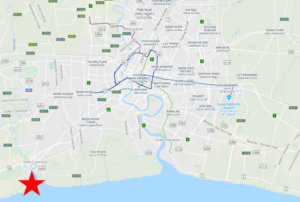
Beside the mouth of the Tha Chin River lies the mostly intact Mahachai Mangrove Forest, accessed by a well-constructed elevated walkway. This is the most reliable site in central Thailand for the elusive Mangrove Whistler, and an excellent place to observe many other mangrove birds, including Collared and Black-capped Kingfishers, Golden-bellied Gerygone, and Swinhoe’s White-eye, among others. Nearby roads provide access to extensive tidal flats and salt pans that host huge flocks of waterbirds, including Asian Dowitcher and Nordmann’s Greenshank.
Orientation
Directions
Mahachai Mangrove Forest is in Samut Sakhon province about one hour’s drive (50 km) southwest of downtown Bangkok. Take the main freeway, Route 35 west for about 40 km into the city of Samut Sakhon.
Prior to the bridge over the Tha Chin River, exit onto the frontage road, which becomes the leftmost lanes of the bridge. Immediately after crossing the bridge, turn left onto the road to Tha Chalom.
After 3.3 km, instead of driving into Tha Chalom, turn right (south) toward Bang Ya Praek. Go 1.3 km to the temple Wat Bang Ya Praek, where there are two options.
Turn left at Wat Bang Ya Praek to remain on the same road, and proceed 2 km to arrive at the Mahachai Mangrove Forest Nature Education Center.
Alternatively, turn right at Wat Bang Ya Praek onto Route 2020 to explore the Khrasa Khao salt pans.
Birdfinding
Mahachai presents a large area of potentially productive habitat to be explored. The mangrove forest at the mouth of the Tha Chin River is a significant remnant and the nature trail through it provides excellent access. To its west, the extensive Khrasa Khao salt pans and other coastal wetlands apparently have not been fully explored for birds (or any such exploration apparently has not been widely reported online).
Mahachai Mangrove Forest. The nature education center has an elevated walkway that forms a 1.5 km loop trail through the mangroves. The trail is often alive with birds, including all the typical mangrove songbirds of the region. Golden-bellied Gerygone and Swinhoe’s White-eye are abundant, and this appears to be the only site near Bangkok where Mangrove Whistler can be found reliably. Collared Kingfisher is numerous, joined in winter by many Black-capped Kingfishers.

The plainly attired Mangrove Whistler is uncommon in central Thailand, but can be found consistently along the nature trail at Mahachai Mangrove Forest. © Ken Langelier
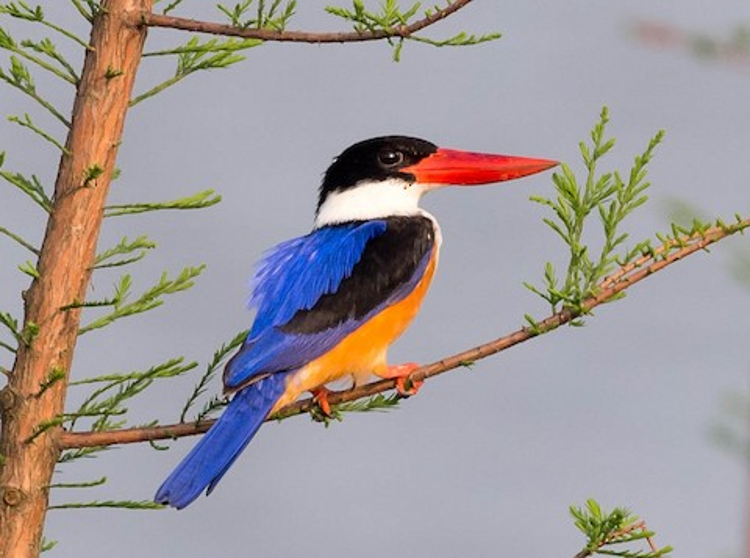
The colorful Black-capped Kingfisher is a common winter visitor Mahachai Mangrove Forest. © Kai Pflug
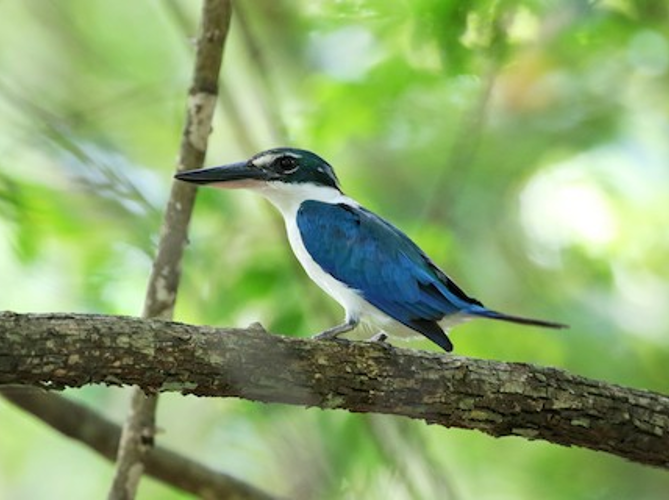
Collared Kingfisher is common year-round at Mahachai Mangrove Forest. © Charley Hesse TROPICAL BIRDING
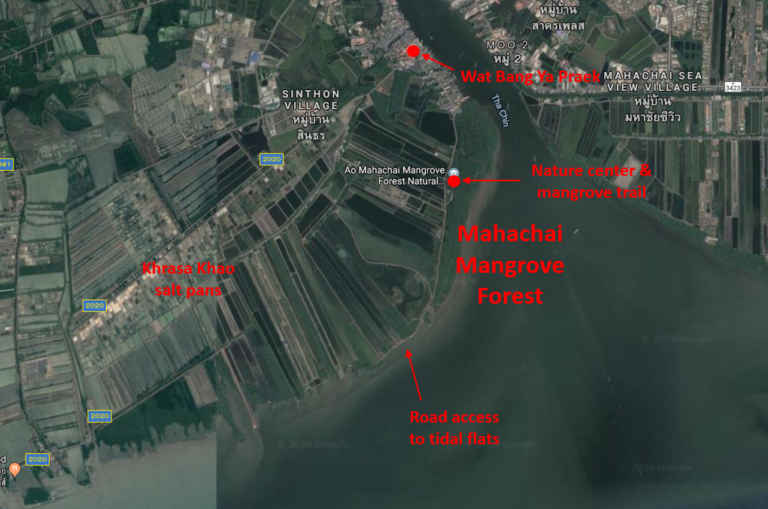
The main road continues past the center for another 3 km, with wetlands on both sides, and the last 1,000 m runs beside extensive tidal flats that provide feeding and resting areas for flocks of herons, shorebirds, gulls, and terns. Along with common shorebirds such as Black-tailed Godwit and Common Greenshank, sizeable flocks of Asian Dowitcher and small numbers of Nordmann’s Greenshank feed in this area during migration and may be present throughout the winter.
Khrasa Khao. It is possible to reach the Khrasa Khao salt pans directly from Mahachai, by driving one of the dyke roads inland to Route 2020, or by turning west onto Route 2020 at Wat Bang Ya Praek.
Route 2020 runs approximately parallel to the coast for about 6 km, then bends south and goes about 1 km to the coast. Along most of it, starting about 1 km west of Wat Bang Ya Praek, there is an expanse of salt pans on the coastal side. Past visitors have found large shorebird flocks in this area, including all the expected species. Asian Dowitcher appears to be regular here as well.
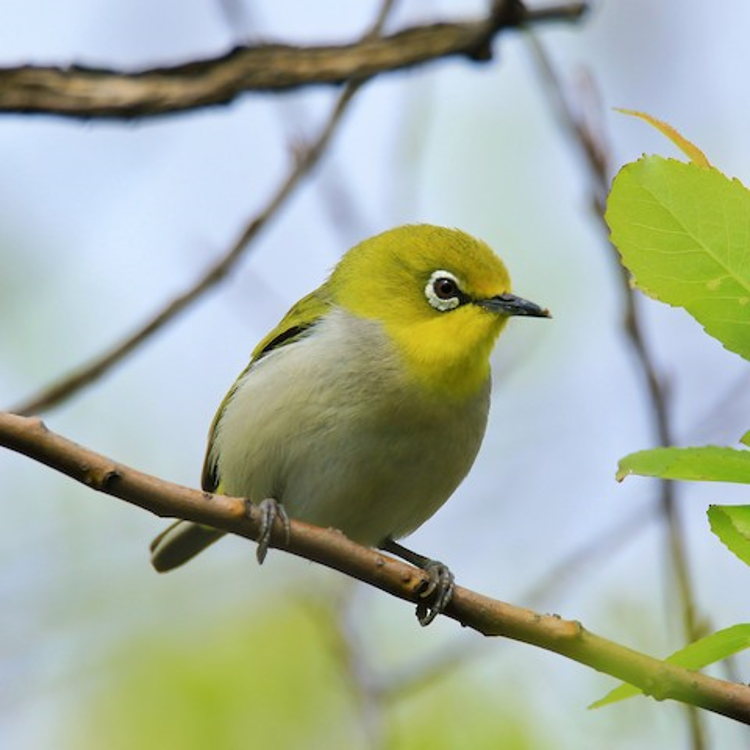
Swinhoe’s White-eye is abundant along the nature trail at Mahachai Mangrove Forest. © Poshien Chien
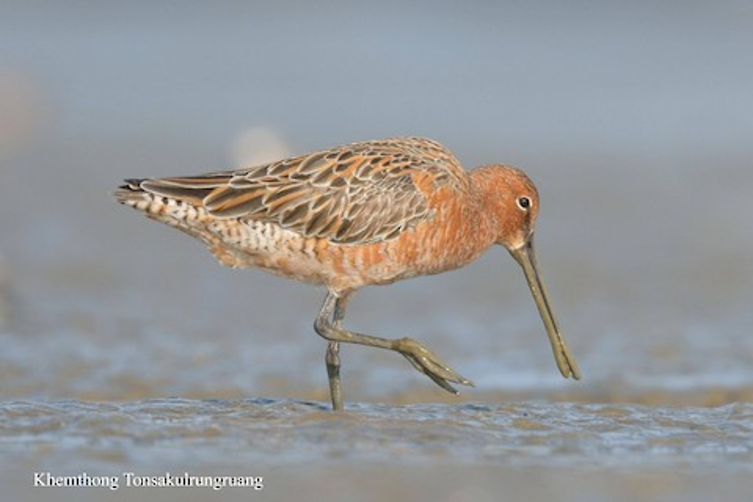
The tidal flats near Mahachai Mangrove Forest are feeding grounds for flocks of Asian Dowicher. © Khemthong Tonsakulrungruang

The globally rare Nordmann’s Greenshank is regular in small numbers in the vicinity of Mahachai Mangrove Forest. © N.K.
Where Route 2020 meets the coast, there is a dyke road heads east for 2 km, then turns south again and becomes a 1 km causeway. The author has not explored this far and does not know whether this road is open to the public. If so, it would certainly be worthwhile exploring.
Notes
When to Visit
Mahachai Mangrove Forest is productive throughout the year, especially during winter and migration periods.
The education center is open daily from 8:30 to 17:30, but access to the nature trail is not limited to these hours. It appears to be accessible 24 hours/day.
Links